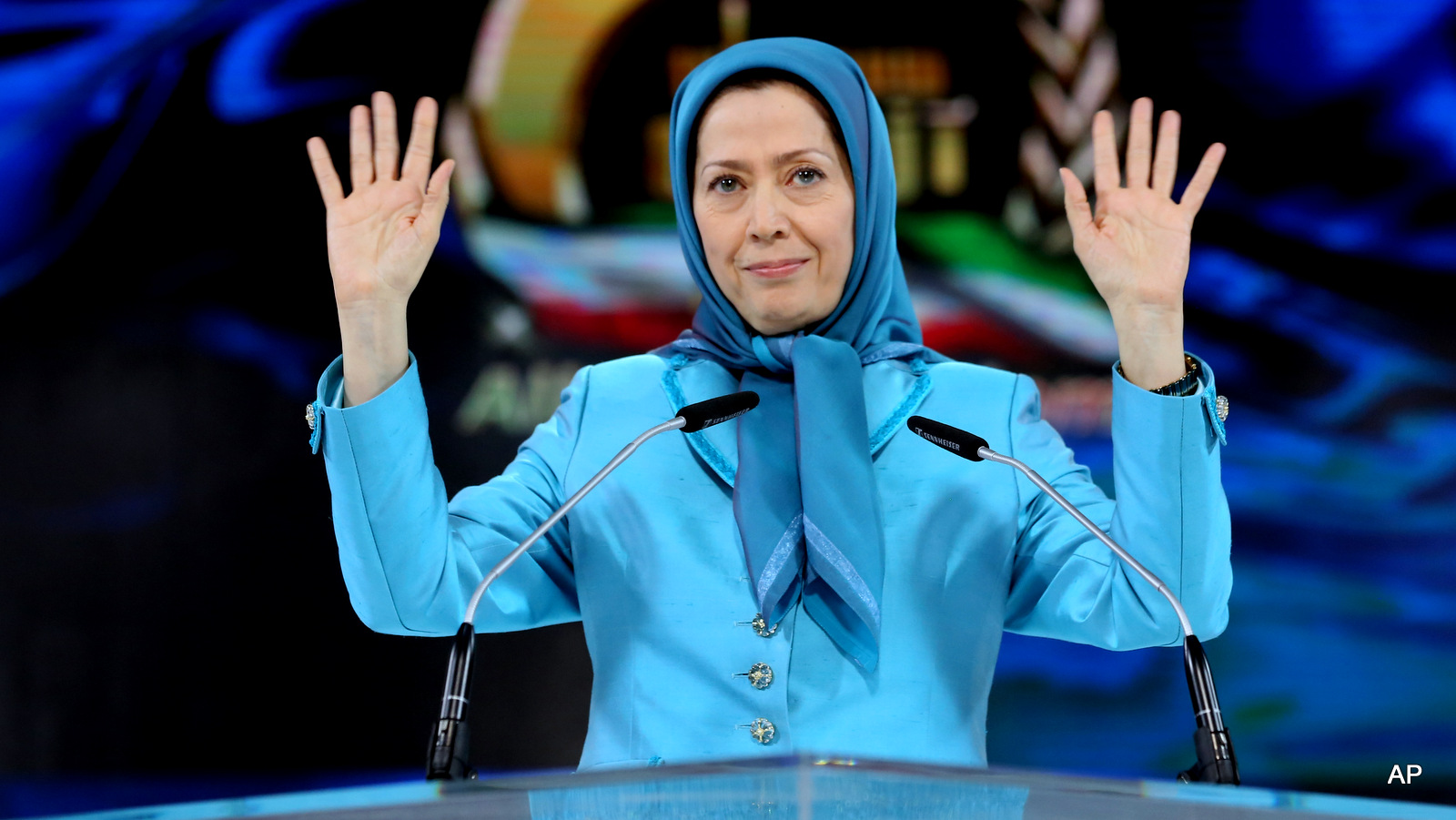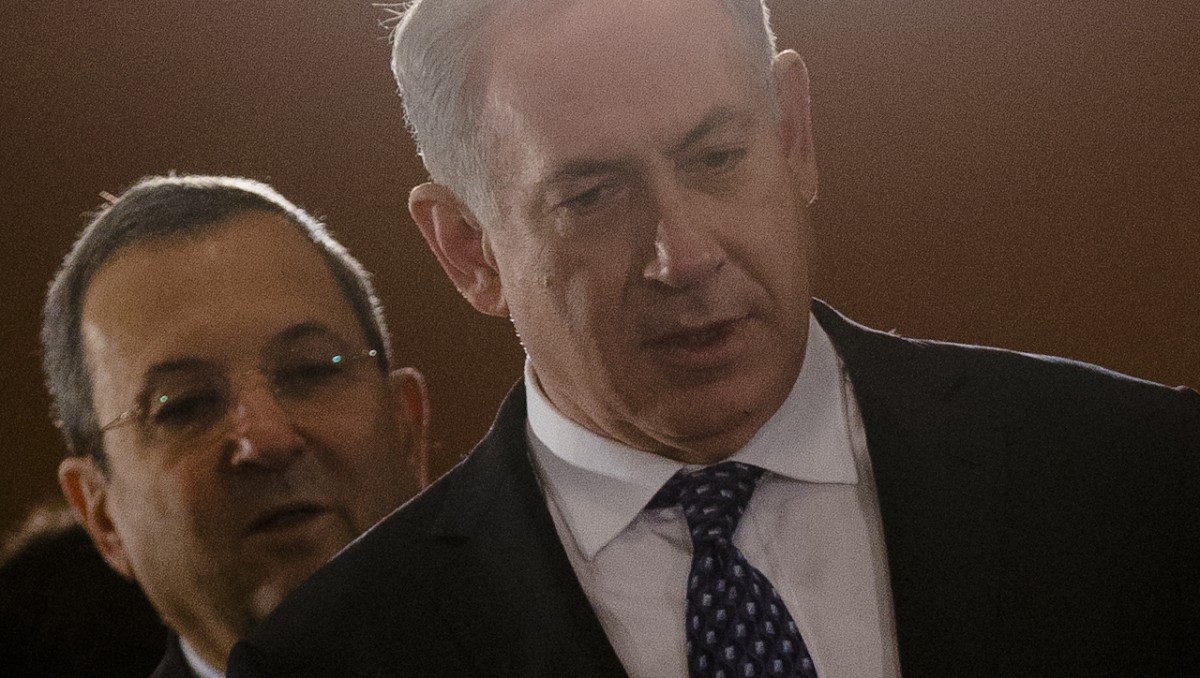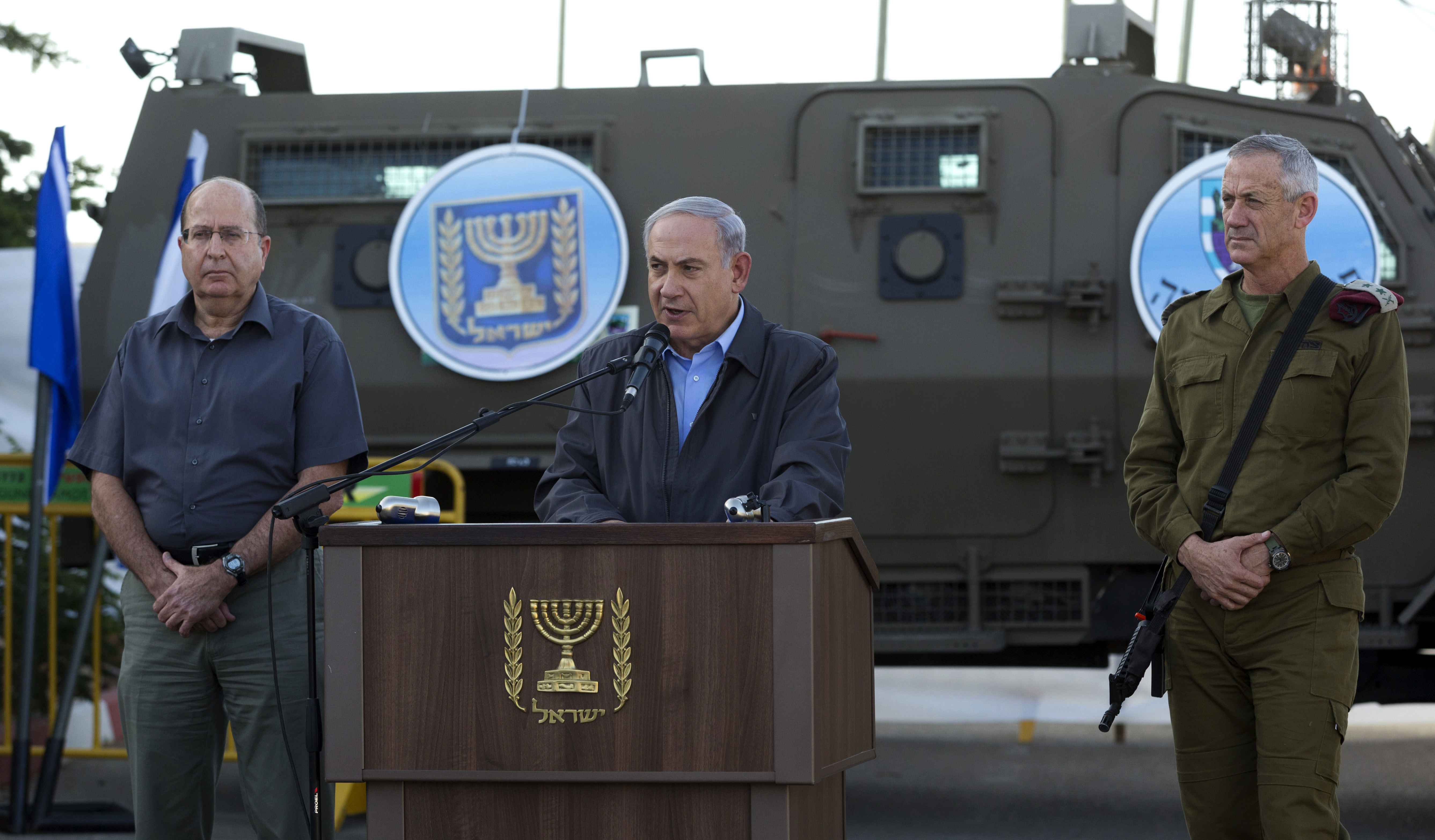
MintPress Analysis — As Congress draws ever closer to voting on the Iran nuclear deal negotiated by the P5+1 powers, pressure is building on both sides of the debate. The Israel lobby is in the midst of spending as much as $50 million on a campaign to defeat the deal, while a far smaller number of NGOs plan to spend considerably less to promote it.
Meanwhile, reporters with a history of opposition to Iran and hostility to its policies, recently writing stories in outlets such as The New York Times and The Associated Press, have participated in an accompanying media campaign republishing and repackaging Israel lobby talking points against the deal.
The AP story
AP reporter George Jahn has a history of unfounded reports about Iran’s nuclear program. In one notorious instance, Jahn published a graph which allegedly charted the power of an Iranian nuclear device producing three times the force of the U.S. weapon that destroyed Hiroshima.
Writing for Antiwar.com in 2012, Prof. Muhammad Sahimi analyzed the drawing, declaring: “It is so amateurish and so wrong that it would be laughable, if not about such a serious matter.” He further declared it wasn’t even up to the quality of the work of his university engineering students. After probing the numbers offered in the drawing, he determined that the supposed nuclear device referenced would actually produce 20 times less than the explosive force claimed.

On Aug. 19, Jahn reported that as part of a recently signed secret agreement between Iran and the International Atomic Energy Agency, Iran alone will inspect Parchin, a military site that since 1932 has been producing conventional munitions for Iran’s armed forces and explosives for both military and civilian use. The IAEA has alleged that around the year 2000, Iran carried out experiments there with conventional high-explosives as part of its research on nuclear weapons.
Even though the IAEA visited Parchin twice in 2005 and found no evidence to support the allegations, the issue has not gone away. Since November 2011, when the IAEA, led by Yukiya Amano, published its controversial report on Iran’s nuclear program, the agency has been pressing Iran to permit another visit and environmental sampling from a building at Parchin where the experiments allegedly took place, even though the agency had inspected 11 other buildings in 2005.
Even the title of Jahn’s report, “AP Exclusive: UN to Let Iran Inspect Alleged Nuke Work Site,” was problematic: Referring to Parchin as a “nuclear site” is baseless. The politicized IAEA under Amano, who is an ally of the West, doesn’t even refer to Parchin as such.
In fact, the AP issued a retraction of this charge on Aug. 28. It also pulled another fast one. Instead of giving the correction a new URL, it gave the correction the same URL as the original flawed article. But it has archived the original article. A Google search using the original title turns up no reference to it at the AP site. Nor is the original article on Jahn’s author page. So it’s almost impossible to find without a meticulous Google search. It appears AP agreed with Jahn’s critics and buried the story. We attempted to contact the AP editorial staff about this matter, but had not heard a reply before going to press.
It took less than a day for Jahn’s report to draw scathing criticism. The IAEA issued a statement refuting it and stating, “The separate arrangements of the roadmap are consistent with the IAEA verification practice and they meet the IAEA requirements.” Amano himself issued a statement: “I am disturbed by statements suggesting that the IAEA has given responsibility for nuclear inspections to Iran. Such statements misrepresent the way in which we will undertake this important verification work.”
The AP released a revised and updated report in which some of the claims in its original report had been deleted, including the claim that it would be Iranian scientists themselves who would sample the air and soil at Parchin. The revised report no longer claimed that the number of air and soil samples taken from Parchin would be limited to seven. But, as the criticisms of the report mounted, the AP was forced to publish what was purportedly the text of the agreement between Iran and the IAEA. But even that did not stop the flow of criticism. Several arms control experts, including Jeffrey Lewis and Cheryl Rofer, cast doubt on the authenticity of the AP’s text of the agreement.
Then, Tariq Rauf, the former head of verification and security policy coordination at the IAEA, who is now with the Stockholm International Peace Research Institute, published an annotated version of the alleged draft of the IAEA-Iran agreement, pointing out many major problems with it and concluding that the draft may be fake. For example, the document refers to Iran as the “Islamic State of Iran.” There is simply no way any Iranian official would permit such a flagrant error (it should be the Islamic Republic of Iran) in a document this important.
If the alleged Iran-IAEA memo is fake, who did it?
This raises an important question: If the alleged draft of the agreement shown to the AP is indeed fake, who did the faking? We believe that Israel’s Mossad and the exiled Iranian opposition group, the People’s Mujahedeen of Iran (MEK), are the leading candidates.

Until September 2011, the MEK, which is viewed as a terrorist cult and despised by most Iranians for working with Saddam Hussein’s regime during the Iran-Iraq war, was listed by the State Department as a terrorist organization. It has a long history of working with the Mossad and other nations hostile to Iran. Earlier in its existence, the group also assassinated key Iranian officials and U.S. military personnel.
In their book, “Spies Against Armageddon,” Dan Raviv and Yossi Melman describe the close working relationship between Mossad and the MEK, going back at least 14 years. The MEK disclosed information about Iran’s secret, but legal, nuclear program in 2002. Writing for The New Yorker in 2006, Connie Bruck disclosed that the information on Iran’s nuclear program had been supplied to the MEK by Mossad after other Iranian exile groups had refused to expose the existence of the program. Jeffrey Lewis debunked the false claim that Iran had a new secret nuclear facility earlier this year. He wrote in Foreign Policy in March:
“Any agreement with Iran is destined to contend with a series of leaks like this. But let’s remember: The MEK and the United States have fundamentally different interests. The MEK highlights Iran’s nuclear programs — real, imagined, and downright fabricated — as a way to build support for regime change in Tehran. Hemming in the Iranian nuclear program through diplomacy removes one of the MEK’s most effective talking points in favor of bombing Iran.
In 2004, a laptop that allegedly contained sensitive information about Iran’s nuclear weapons research program was stolen in Iran and given to Western intelligence agencies. The laptop in question has never been shown to Iran or even the IAEA, but its purported contents have been the basis of the IAEA allegations about the “possible military dimensions” of Iran’s nuclear program.
Investigative journalist Gareth Porter, author of “Manufactured Crisis: The Untold Story of the Iran Nuclear Scare,” reported in June 2014 that documents purportedly found in the laptop had been fabricated by Israel and the MEK. The credibility of the laptop story has been completely demolished, not only by Porter, but also others, including Prof. Sahimi.
A covert program to assassinate Iranian scientists and key personnel involved in Iran’s nuclear and missile program has been waged for a decade. Israel is widely believed to be the mastermind behind the assassinations, as reported by journalists like Seymour Hersh, Yossi Melman and Porter.
After five nuclear scientists were murdered, the U.S. made its displeasure with the operation known. Mossad officials told CBS News reporter Dan Raviv that “they felt pressure from the Obama Administration – more than a hint – to stop carrying out assassinations inside Iran.” Raviv also notes that Iranian agents, who other sources identified as having ties to the MEK, partnered with the Israelis who carried out the killings: “Remarkably, the Israeli assassins were never caught – obviously having long-established safe houses inside Iran – although several Iranians who may have helped the Mossad were arrested and executed.” In February 2012, two years before Raviv’s article was published, Israeli newspaper Haaretz cited an NBC News report that Israel trained the MEK assassins to carry out the murders.
The New York Times bashes the nuclear deal
Attempts by the mainstream media to torpedo the nuclear deal with Iran do not end with George Jahn’s reporting for the AP. The New York Times published a front-page story on Aug. 23 attacking the agreement. David Sanger and Michael Gordon claimed that after 15 years Iran could (or even would) be free to resume its alleged nuclear weapons program and produce weapons of mass destruction.
This echoes claims in briefing points distributed by the American Israel Public Affairs Committee (AIPAC), the leading Israel Lobby group opposing the deal:
“This deal is dangerous because it legitimizes Iran’s nuclear program and enables
Iran to become a nuclear threshold state. It … grants Iran virtually instant breakout time after 15 years.”
Further, previous reporting by Sanger and William Broad regularly and frequently quotes Ollie Heinonen and David Albright, the two nuclear experts who are the most hostile to, and skeptical of Iran’s claims that it is not producing weapons of mass destruction. It also seems clear that though Sanger does offer space to those favoring a diplomatic solution, he is far more sympathetic to the hawkish stance advocated by Israel and AIPAC. Former CIA official Ray McGovern called him “one of the Times’ stenographers/cheerleaders for the Bush/Cheney attack on Iraq in March 2003” and “an effusive hawk also on Iran.” In 2004, Edward Herman, Professor Emeritus of Finance at the Wharton School of Business, described Sanger’s reporting as “supportive propaganda,” which he characterizes as “fram[ing] the issues in such a way that the premises of the propaganda source are taken as given, with any inconvenient considerations ignored and any sources that would contest the party line bypassed or marginalized.”
Sanger’s premise, Herman argues, is that “the United States and Israel are good and do not pose [nuclear] threats worthy of mention, so that any ‘advance’ in nuclear arms, or the possession and threat of use of such weapons, by these states is outside the realm of discourse.” Sanger, in Herman’s view, presupposes the U.S. has the right to determine which states may not obtain nuclear weapons, and that Iran does not have the same right to self-defense that other nations do. In other words, while the U.S. and Israel may possess nuclear weapons because we are “good,” Iran may not because it is by definition “bad.”
There are several questionable assumptions Sanger and Gordon make in their report criticizing the P5+1 deal. One is that after 15 years the Iranians would be in the same position they are supposedly in now: eager to produce WMD and held back only by Western sanctions. Nowhere do Sanger and Gordon note that 15 years is a terribly long time in geopolitics. In that span, alliances shift, leaderships change, demographic and societal changes transform nations, and even political systems collapse. They make no provision for such transformation either inside Iran or in its relations with the West. It is as if time would stop for Iran.
Of course, President Barack Obama and supporters of the deal believe that such transformation can and will occur. Further, if a Democrat wins the next presidential election (which seems likely at this time), the current policy will likely be maintained over the next four to eight years. Thus, there is a better-than-even chance that with such continuity in the U.S. policy, there will be a constructive rapprochement with Iran, rather than continuation of enmity.
The second flaw in the Times report is the presumption that Iran will build a bomb after the treaty ends. The truth is, if the deal fails now, Iran will not feel bound by any agreement to limit its nuclear program. In other words, failure of the deal could bring Iran to nuclear weapons status now, rather than in 15 years. In addition, the U.S. intelligence community believes that not only does Iran not have any nuclear weapons program, but Iranian leaders have not even made the decision to pursue one in the future.
This has been typical of reporting by Sanger, Gordon and other journalists at the Times. They only quote the deal’s opponents, sensationalize news, exaggerate Iran’s capabilities and even intentions, and propagate the views of the neocons and Israel lobby. (For a comprehensive critique of the Times reporting on Iran see here.)
Lesson for Iran: Ehud Barak’s bombshell
Supporters of the nuclear agreement say that its failure will lead to war with Iran. But those who oppose the deal claim this is an exaggeration. The naysayers should keep in mind this recent bombshell dropped (in Hebrew) into the Israeli media. In the report, Ehud Barak told two authors collaborating on the former’s biography there were no less than three separate instances in which Israel planned to attack Iran during his tenure as defense minister in Benjamin Netanyahu’s last government.
In all three cases, various circumstances interfered with the decision and led to a cancellation of plans for war.
The first instance came in 2010, when Israel’s security cabinet turned to the IDF chief of staff, Lt. Gen. Gabi Ashkenazi, and pressed him about whether the army was sufficiently equipped and prepared to take out Iran’s nuclear facilities. Ashkenazi said it wasn’t, according to Barak.
One year later, a new chief of staff, Lt. Gen. Benny Gantz, told Netanyahu and Barak that the army was now prepared to undertake the mission. The two politicians then turned to their security cabinet for approval of the plan. But after a sobering presentation by military and intelligence officials pointed to the difficulties and potential losses that might be involved, two key ministers, Yuval Steinitz and Moshe (Bogie) Yaalon, withdrew their support.
Hence, Netanyahu and Barak were again forced to shelve the plan.

Israel again prepared to launch an attack again 2012. But a major Israel-U.S. joint military exercise had been previously planned for precisely that period. Israel requested a delay in the exercises, but the U.S. refused. Even Netanyahu’s reckless government was unwilling to begin a war against Iran with U.S. generals and the secretary of defense sitting in its midst. Israel knew that the U.S. opposed the attack and considered it against U.S. national interests.
To be candid, Ehud Barak is a shrewd, manipulative politician who’s been known to play fast and loose with the truth when it serves his interest. Yossi Melman believes (and my Israeli source further confirmed) there never was a real Israeli military option to attack Iran; and that Barak and Netanyahu played an elaborate ruse on the U.S. and the world making them believe Israel would attack unless the world ratcheted up pressure on Iran.
But regardless of whether Barak’s stories are apocryphal, Israel has never renounced its right to attack Iran should it find the nuclear threat a clear and present danger. Further, the current Israeli government is more hawkish than the one under which Barak served. It would be much easier to bring the nation to war under the current government. If the deal fails, Israel will be more motivated to attack Iran. This time for real.
But if the deal succeeds, it would be almost impossible for Israel to mount a military assault. Not only would Israel be defying its major ally, the U.S., it would be thumbing its nose at the five other most powerful nations in the world standing behind it — namely, China, France, Russia, the United Kingdom, and Germany.
US documents on Israel’s refusal to join Nuclear Non-Proliferation Treaty
An interesting sidelight to this saga is the State Department’s release last week of a seemingly obscure batch of documents about nuclear relations between Israel and the U.S. during the period shortly after the 1967 war between Israel and the frontline Arab states. The U.S. discovered that Israel had planned to deploy 10 Jericho ballistic missiles with nuclear warheads, and the former made it clear that it would not accept the deployment. But, as a compromise, the U.S. proposed that it would accept everything short of assembly and deployment of the weapons.
This became part of the studied ambiguity of Israeli nuclear policy in which it could say, as the founder of Israel’s nuclear weapons program, Shimon Peres, did, that Israel would not be the first in the region to use nuclear weapons. It is known that Israel contemplated doing precisely that in the first desperate days of the 1973 war, when it faced a near rout of its forces in the Sinai, but especially in the Golan.
Then-defense minister Moshe Dayan urged Prime Minister Golda Meir to consider a demonstration detonation of a nuclear weapon in the desert to warn the Arab states of what they faced if they did defeat Israel on the battlefield. Thankfully, Meir dismissed the advice.
In 1969, U.S. President Richard Nixon and his national security adviser, Henry Kissinger, pressured Israel to sign the Nuclear Non-Proliferation Treaty and to agree to neither arm nor deploy its Jericho missiles. They also demanded that Israel cease development of new forms of WMD. Though the documents do not reveal what, if any, answer Israel offered, it never joined the NPT, nor did it stop development of nuclear ballistic missiles.
It’s worthwhile to note that the 2007 National Intelligence Estimate, prepared by the CIA, says that Iran’s nuclear weapons program ended in 2003 and that there is no evidence it has been resumed. The Mossad itself told South African intelligence in secret cables sent in 2012 that Iran was not enriching uranium to the higher level required to produce a nuclear weapon. Ayatollah Ali Khamenei also issued a fatwa declaring that the use of nuclear weapons contravened Islam.
Even if it did possess them, Iran does not have the ballistic missile capability to use them.
Meanwhile, Israel now has at least 200 nuclear warheads and advanced ballistic missiles that can deliver payloads throughout the region. Germany has also recently provided five Dolphin class nuclear-capable submarines which allow Israel to fire WMD from the sea. Ironically, the nation which killed 6 million Jews has offered Israel the capability of incinerating the entire Middle East.
It’s no accident that Secretary of State John Kerry arranged for the release of this material now. It shows how reckless the Israeli government has been about its nuclear weapons program, and what can happen when a country hell-bent on joining the “Nuclear Club” thumbs its nose at the world and goes its own way. It also offers an example of what Iran might do if the current deal dies — the difference being that Iran has signed the NPT and has, so far, largely abided by its provisions.
What will Bibi do if the deal passes?
Israel’s Prime Minister Netanyahu will eventually realize that the nuclear deal is likely to be approved. Even if Congress votes against it initially, members most likely cannot muster the votes to override a presidential veto — a veto that Obama has promised. That means Netanyahu must play the “long game.” He will continue to press his urgent message that Iran is an existential menace to Israel and the world, even after the deal passes.
He will, as he did just this week after a rocket attack against Israel was launched from inside Syria, make a dramatic flourish about Iran being the world’s greatest exporter of terrorism. In these cases, it will be important for the world to regard the Israeli leader’s claims with a healthy dose of skepticism, particularly now that there are credible reports about Israel helping the al-Qaida affiliate in Syria, Jabhat al-Nusra, or the Nusra Front. Al-Qaida is, of course, a terrorist group recognized by the West as such, so the question is: Which terrorist is the real terrorist? Israel’s? Iran’s? Both?

In the case of the recent attack, unknown militants launched four rockets that landed harmlessly inside the Israeli-occupied Golan. No one was injured, though Israel did complain that this was the first time since 1973 that any rockets had been launched from Syria into Israel.
It is worth noting that the Golan was conquered by Israel, and that no international body or nation recognizes it as Israel’s. It is considered Syrian land. In effect, the missiles were fired from inside Syria and landed on territory which is recognized as Syrian under international law.
Israel’s defense minister claimed the Islamic Jihad, under the guidance of the Iranian Revolutionary Guards (IRGC), orchestrated the attack. He even named the IRGC officer allegedly responsible for the rockets. But there are several problems with the claims: First, Islamic Jihad is a Gaza-based group not known to have any presence in Syria, though Israel says there are some fighters located there. Second, why would Iran employ Islamic Jihad in the attacks when it has far more skilled and well-armed fighters in Hezbollah at hand, who have direct experience in attacking Israeli targets? Third, the IRGC officer is responsible for the Palestinian theater of operations, so why would he be operating in Syria?
Israel has cried foul in the world media and sent diplomatic demarches to all the P5+1 signatories, warning them that this is what they face if they force the agreement down Israel’s throat; that somehow a nation that has agreed to significantly limit its nuclear program for at least 15 years, will turn to crude terrorism as a substitute in its campaign of “world domination.”
Netanyahu also pins his hopes for dismantling nuclear détente through the auspices of a Republican president. Since 2008, he has not only hankered for a GOP victory, he’s even campaigned in this country for one — unprecedented interference by a foreign leader in the U.S. domestic politics.
His intimate ally, billionaire casino magnate Sheldon Adelson, has spent and will continue to spend hundreds of millions of dollars in pursuit of this goal. He has failed thus far, and he is unlikely to succeed for another four to eight years, depending on political developments.
That may be long enough to see the end of the Israeli leader’s political career. Or, it may be long enough for Iran to gradually transition to a more democratic, tolerant and cooperative power in its neighborhood. Such an eventuality would neutralize any toxin that the Israeli could hope to inject into international discourse.

